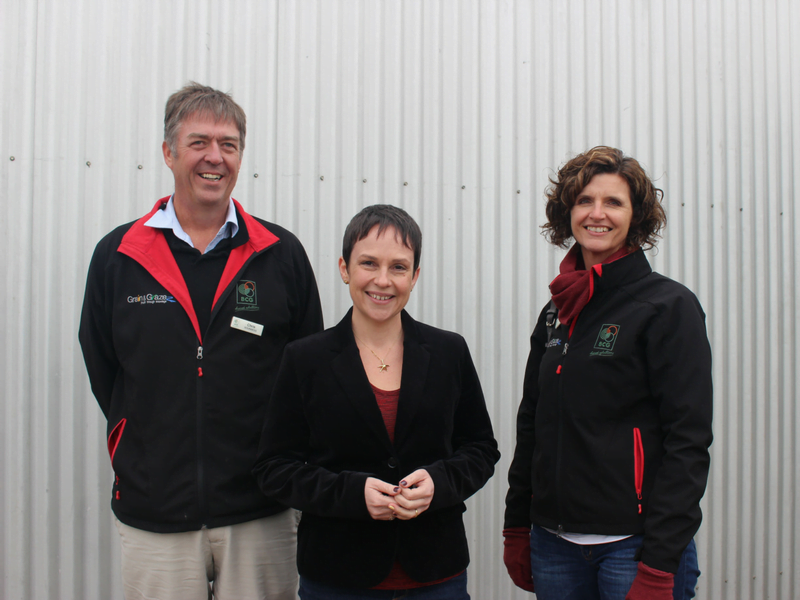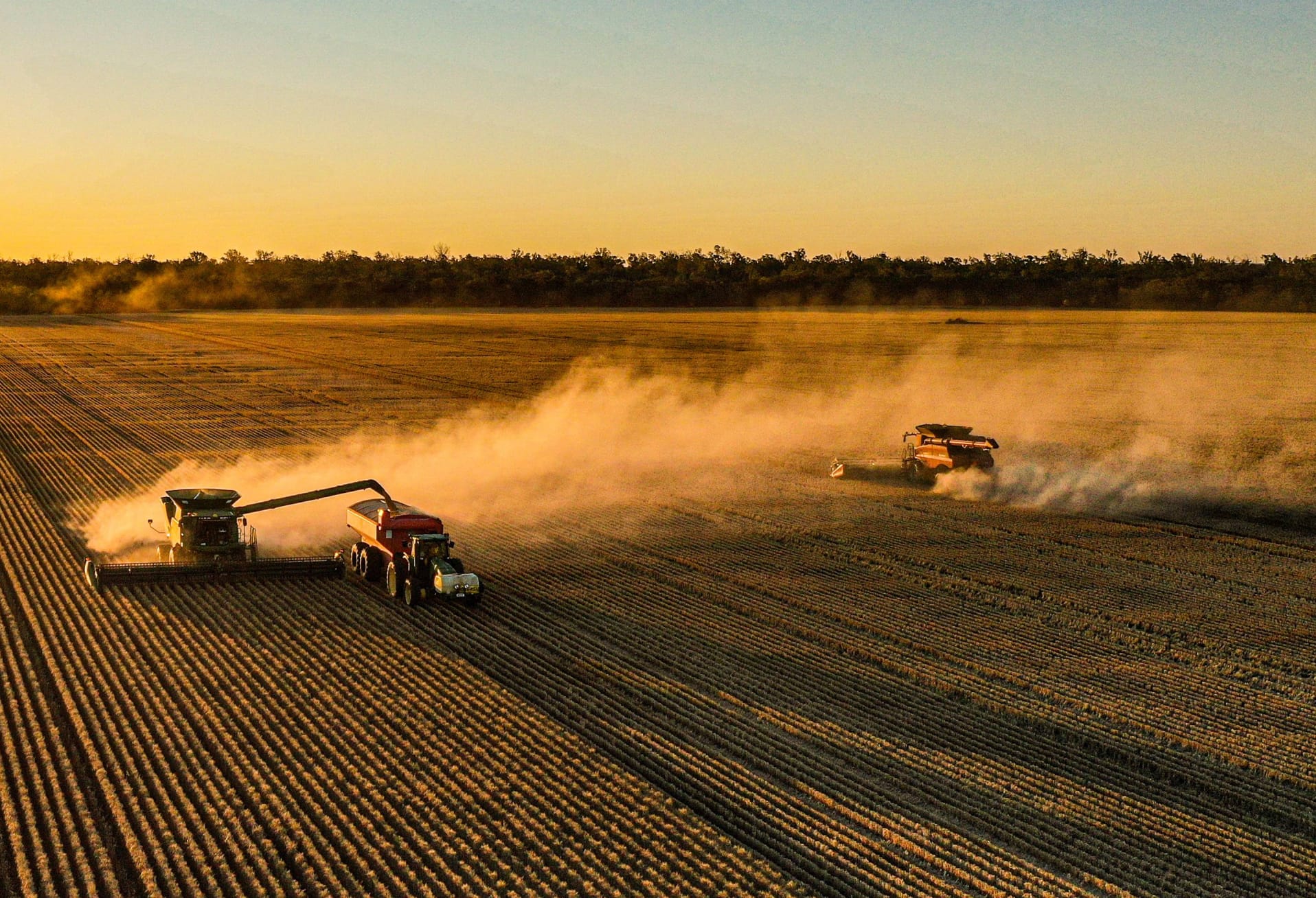BCG held a Managing Dry Season Sheep Nutrition forum recently at Jake Bish’s and Pollington’s working containment yards at Nullawil. Guest speakers Jess Revell (Rumenate Livestock Services), Millie Moore (S&W Seeds) and Alison Frischke (BCG) provided farmers with some key considerations when supporting livestock production out of season using containment feeding and grazing standing crops.
Attendees shared their experiences with containment yard design, management and logistics, and use of new technologies like cameras for yard and water monitoring, sheep weighing and handling, and using an auto-feeder for timed and measured ration feeding.
Key messages:
- Containment areas can improve feed utilisation and livestock condition, whilst protecting soil health and emerging pastures.
- Prioritise animal health when implementing containment areas, carefully considerating stocking density, water quality, shade and nutritional requirements.
- Containment reduces feed requirements by up to 20 percent per day.
- Margins are slim when feeding stock in containment, so it is important to understand the cost per megajoule of energy and stay on top of feed budgets and quality of feed.
- Automatic feeders allow for greater control of rations and provide flexibility in workforce requirements.
Containment areas
Livestock containment areas refer to a fenced-off section within a property to intensively hold and feed livestock. There are many benefits of containment including improved soil health, protection of pasture resources and reduced labour. They can also improve feed utilisation, animal health and condition and animal productivity.
Set-up and transition to containment areas and paddock feeders
When transitioning sheep to a paddock feeder or containment area, it is important to note:
- Ewes with a body condition score of three perform best in containment.
- It can take 10 – 14 days for sheep to become accustomed to containment yards and feeding structures. Where possible, it is beneficial to get them used to the feeders prior to transitioning.
- When introducing sheep to the containment area, weigh and separate sheep into weight groups differing by 5 kgs.
- Although it’s not recommended to lamb in containment, if circumstances mean containment areas must be used, separate singles and multiples bearing ewes and manage their nutrition accordingly. Preferably, keep twin lambing ewe mobs to 50 or less ewes to prevent mismothering.
Matching feed to nutritional requirements
Knowing the quality of feed on-hand is essential to properly align feeding to the sheep’s growth or reproductive stage. Feed tests are an important tool in assessing this.
Some brief notes regarding feed tests results:
- Dry matter percentage: measures the water content of the feed. Specs on a feed test are quoted on a dry matter basis. By understanding the feed moisture level, you can understand what you are feeding on an ‘as fed’ basis.
- Digestibility: the higher the quality, the more metabolisable energy (ME). High quality is typically above 70 percent.
- Metabolisable energy (ME): this refers to energy available for production and is derived from digestibility.
- Crude protein (CP): important for growing rumen microbes and muscles, and for use in late pregnancy and lactation. Commonly quoted spec, although other protein fractions describe the nature of the protein content and how it is digested. To calculate crude protein = N content (%) x 6.25.
- Fibre (commonly NDF and ADF): fibre fractions increase with plant maturity and ageing. It is needed for rumen function but less is typically better and produces better nutrient content.
Supplementing with energy and protein is necessary to meet requirements for pregnancy and lamb growth rates. When developing rations, aim for:
- Starch: 20 percent is the minimum requirement for starch content in a ration. An average year cereal hay contains lots of sugars, but has been low in last year’s hay samples.
- Grain: Aim for above 40 percent grain in a ration as grain drives weight gains. When developing a finisher ration, it is essential to include between 80 to 90 percent grain, as the high levels of starch aid in driving production.
Managing sheep health
Clean water
Clean water sources regularly and ensure there is good flow rate to the trough, as contaminants such as one pellet of manure in a trough can decrease a sheep’s water intake by 15 percent.
Shade
Shade can affect weight gain, so it is important to consider this when designing a containment area. Trees are a beneficial way of implementing shade for livestock, but ensure their trunks are protected to avoid ringbarking. Erected shade cloth and stand-alone shade structures also provide useful shade areas.
Protein
Correct management of protein is important, particularly to meet the needs for ewes in late pregnancy and fast-growing lambs. While a protein flush one week either side of rams going in can be beneficial for ewes, remove the protein supplement beyond the first week of joining as ongoing excessive protein levels above 16 percent can cause ammonia to spill into the blood stream, and alter the conditions within the uterus potentially leading to embryo abortion. High protein levels, low calcium levels and sometimes changes in terrain (e.g. from hilly to flat environments) are all causes of prolapsing in ewes.
Mineral requirements
Containment or supplementary feeds also must be balanced in minerals. Minerals are sometimes present within sheep vaccines, but often only last several days. Top up dietary minerals using mineral blocks, loose licks or provide in rations for long term benefit. Sheep will lick salt blocks until their salt intake is satisfied and then stop consuming the blocks, as seen when grazing cereal crops. When this occurs, switch to a molasses-based block to encourage them to continue licking and maintain their mineral, and importantly calcium intakes.
Be mindful of overdosing with minerals such as copper and selenium when using mineral blocks. For example, if sheep have been grazing pastures with heliotrope for a long time and have accumulated these minerals in the liver, then mineral blocks could potentially create an overdose effect.
Grazing standing crops
A standing crop can offer improved nutrition and groundcover compared to other annual pasture paddocks late in the season and before stubbles are ready or have been exhausted. Systems producing autumn or winter lambs require higher growth rates to meet target sale weights (which is also occurring at this time). Standing crops are a way to finish lambs quicker at the three to six months of age, enabling growers to sell earlier and relieve farm stocking pressures. In addition, standing crops can help ewes regain condition during pre-joining, pregnancy and lambing.
Rather than using a cereal crop for early winter grazing then locking it up, consider using the crop for grazing from late July to August through to grain maturity. The crop should be sown and grown as a crop intended for harvest. As the season unfolds and more is known about feed availability, and sheep and grain prices, decisions can be made whether to graze, cut for hay or harvest for grain, or a combination of end uses that generate the most profit.
Using feed tests to understand the crop’s nutritional value as it matures, top up protein to meet sheep requirements using an undersown legume pasture such as clover or medic, or supplement with high protein grain. Protein content was measured at Nullawil in a range of cereal and medic options last year, and is reported in the 2022 BCG Season Research Results.
Further Information:
https://www.feedinglivestock.vic.gov.au/wp-content/uploads/2019/03/Sheep-drought-feeding-guide.pdf
https://www.bcg.org.au/managing-standing-crops-for-grazing/
https://www.bcg.org.au/research-results/
This event was supported by the Australian Government’s Future Drought Fund, National Landcare Program and the Southern Mallee BestWool Best Lamb group.











